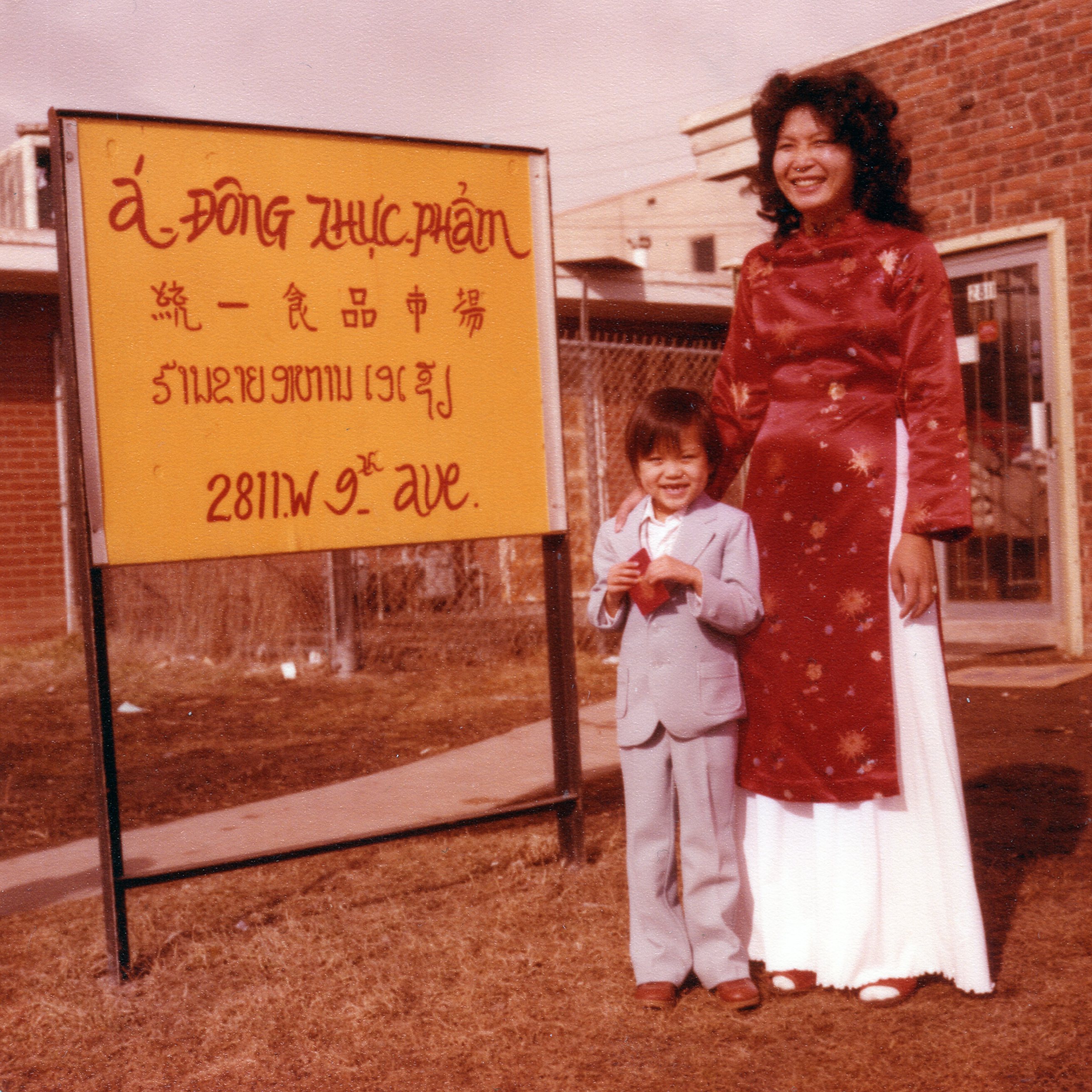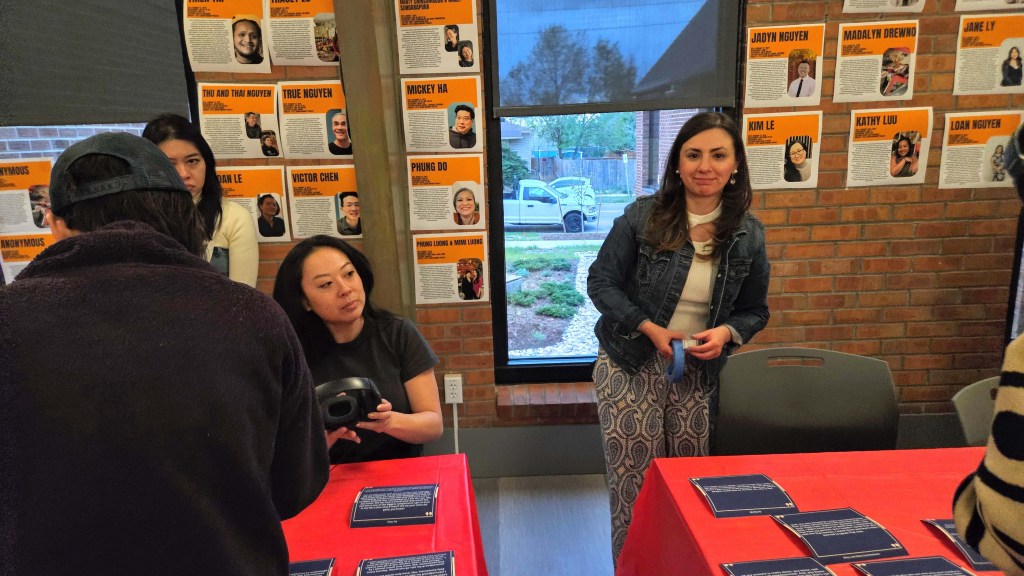
Phoung Do

Audio By Carbonatix
For anyone who’s visited the many shops, businesses and restaurants in the South Federal strip that’s become known as Little Saigon, the district is a much-loved destination as an ethnic enclave for the Vietnamese community. Just off Alameda Avenue, a classic Asian tori gate welcomes people to the Far East Center strip mall, which was named to Colorado’s registry of historic places in 2024, and the mall and its parking lot have become home to annual festivals that showcase Southeast Asian food and culture.
But Little Saigon stretched for many blocks beyond the intersection of Alameda and Federal Boulevard, south to Mississippi Avenue. And the district is a diverse mix of Asian mom-and-pop shops, with a wealth of Latino-owned businesses, too. The district also includes the neighboring Asian businesses along West Alameda down to the Alameda Square Shopping Center anchored by Great Wall Supermarket.
The legacy of the Southeast Asian community, which was designated by Denver City Council as the Little Saigon Business District in 2014, is being celebrated in a new exhibit, Big Dreams in Denver’s Little Saigon, running Tuesday, October 21, all the way through October 5, 2026, at History Colorado Center.
Big Dreams in Denver’s Little Saigon is a partnership between History Colorado and its Museum of Memory program, which preserves the state’s past in oral history interviews, and Colorado Asian Pacific United, a nonprofit formed initially to educate the public about the forgotten history of the Chinatown that once thrived in lower downtown Denver, and is now focused on telling the stories of the many Asian American, Native Hawaiian and Pacific Islander communities in the state. CAPU’s long-term goal is to establish an AANHPI museum in Denver.
This year, make your gift count –
Invest in local news that matters.
Our work is funded by readers like you who make voluntary gifts because they value our work and want to see it continue. Make a contribution today to help us reach our $50,000 goal!
Joie Ha, the executive director of CAPU, led the organization’s efforts in finding volunteers from the community (including her mother, Ivy) to conduct the interviews with community members, both business owners and people who shop and dine in the district, for their stories. Not all of the Little Saigon Memory Project’s participants are Vietnamese, though they may have lived in the country. The history of Southeast Asia is complex, and populations moved across borders as political turbulence and wars forced migrations. Ha’s family is ethnic Chinese; they lived in Vietnam and were part of the wave of refugees who settled in Denver after the war in the late 1970s.
“My mom and I actually interviewed each other,” says Joie Ha from a dorm room at Oxford University in England, where she’s working toward her Ph.D. in anthropology while managing CAPU long-distance. “Yeah, that was really great. I believe we’re at like 38 oral histories right now, including the anonymous interviews.” Some interview subjects asked to remain anonymous because of the emotional toll of reliving their wartime and refugee journeys, and for others, simply the Asian cultural value of not bringing attention to oneself.

Gil Asakawa
Whether anonymous or not, it was important that the oral histories be recorded by people and of people from the community, Ha notes. “We were really intentional about making sure that people from the community were the ones actually conducting the interviews, and finding folks and talking to folks that they knew. So it was really an organic process, and it wasn’t like outside, external organization coming into a community to do that.”
She adds, “It’s something that we really take to heart, that if someone tells their story and we want to elevate these narratives that have been forgotten, we need to let the communities that are the story holders be the ones sharing and be the ones curating and be the ones making decisions on what the audience will see.”
Plus, she says, the experience has been enlightening for CAPU’s future projects. “It’s been really great practice for us,” she says, “because we’re hoping to start a museum, and we’re learning about what a truly co-curatorial method looks like, with our often very rigid national history museums, on what goes into an exhibition or what constitutes work that’s worthy. We want to make sure that we are working with the community, that the community always feels like they’re in the driver’s seat, and they always are the ones making the decisions.”
Ha explains one of the most impressive results of the oral histories. “I think if anything was surprising to me, it was one common thread that tied us together, regardless of political affiliation — because we did have people that were from different backgrounds, opinions on things — that was very consistent across the board was resilience of family, of culture.”

Gil Asakawa
The exhibit itself isn’t just about the oral histories. “The oral histories are actually a smaller part of the entire exhibition,” Ha notes. “They’re like an appendix in some ways, because the exhibition itself really focuses on how Little Saigon changed, and what it was like to walk in Little Saigon, and what it was like to be raised by this neighborhood, so it’s broken up into different types of services and stores that you can find, and how it has changed over the years. And within that is embedded oral histories, and the documentary film and we commissioned some artists to look at oral histories and to make original pieces for the exhibition. So the oral histories, in a lot of ways, served as a part of the primary source material, but the interpretation of the stories and the reinterpretation of them is sort of what you see played out in the exhibition.”
The exhibit also includes a preview trailer of the documentary There’s a Lane for Us by filmmaker Hanna Tran (who grew up in the Little Saigon community). The film dives deep into the area’s historical significance and the next generation’s efforts to carry forward its legacy. The feature-length film will be completed in 2026.
Yadira Solis, director of History Colorado’s Museum of Memory program, explains that the Little Saigon project began with interest from the state. “The project started initially with the Office of Archeology for Preservation and the State Historical Fund,” she says. They wanted to preserve the history of the Little Saigon district. “That is how it started. They had an interest in being able to do oral history collecting and connect with the community, and so they referred us, the Museum of Memory, to do the work with CAPU. We wanted the stories of the people, entrepreneurs and business owners and frequent visitors.” Solis and CAPU set about finding and training volunteers to collect the oral histories, and along the way, they held community meetings in the Far East Center and then a Listening Party after many of the histories were recorded, as well as editing and posting the audio recordings online.
Now, some of the recordings and the supporting photographs and artifacts, as well as the trailer for the documentary, will be put on view at the museum for the next year. Unfortunately, Ha will miss the opening of the exhibit because of her studies at Oxford, but she’ll be there in spirit.
For her Ph.D., Ha says, she’s focusing on “storytelling and healing for refugees. It’s so very similar to what we’re already doing.” Her experience with the Little Saigon project has helped her establish a baseline for her ongoing research.
“A lot of my work, I’ve already been doing it,” she says. “So now I’m trying to bring an academic lens to it. Some people just come from academia. But I’m the opposite — I’m already doing it. What’s been interesting is when I talk to my supervisor about my proposal, getting oral histories and curating things as a community, I’ve accomplished it.”
Big Dreams in Denver’s Little Saigon is the result of Ha’s own big dreams for her community.
The exhibit Big Dreams in Denver’s Little Saigon runs from October 21 to October 5, 2026, at History Colorado Center, 1200 Broadway, open 10 a.m.-5 p.m. every day. For more information and some of the oral history recordings, visit historycolorado.org/little-saigon-memory-project.
(Editor’s note: Gil Asakawa is a founding boardmember of Colorado Asian Pacific United, but he was not involved in gathering any of the oral histories for the Little Saigon project.)